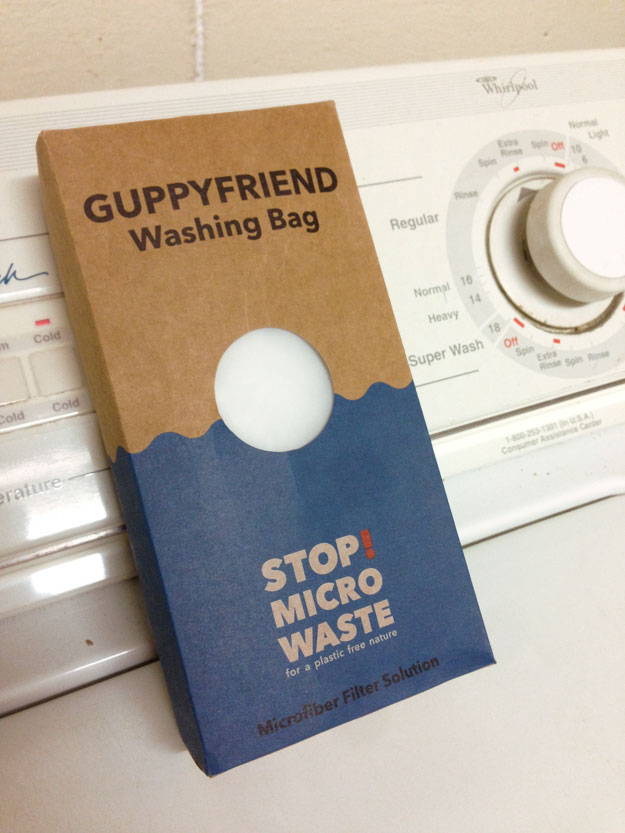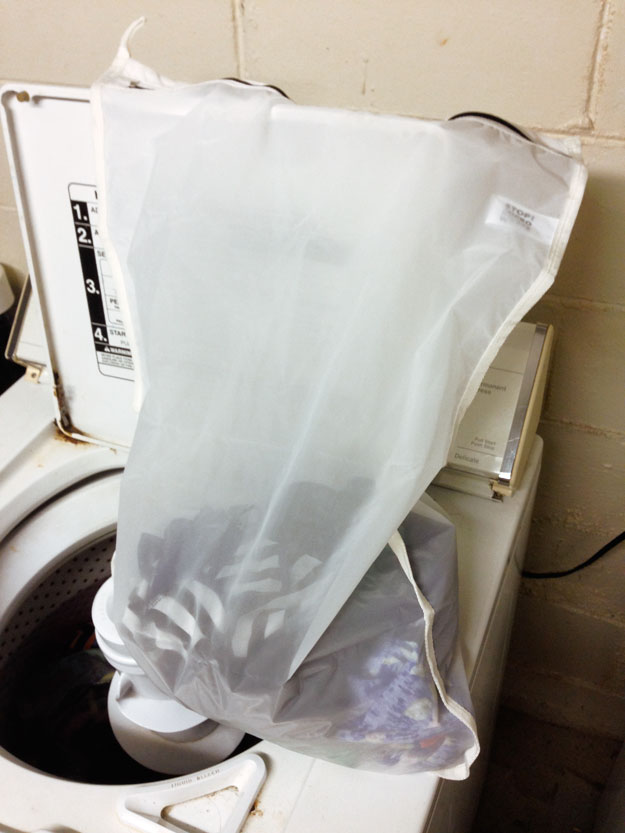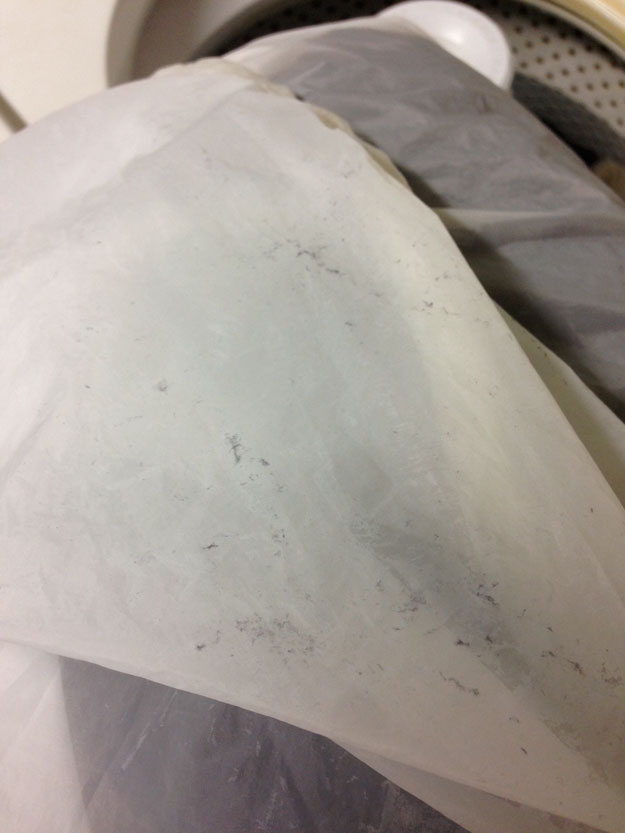I Tried the Guppyfriend Washing Bag
A few months ago I posted about the issue of synthetic microfibers being released from our laundry into waterways, where they accumulate and cause environmental problems. While re-engineering modern fabrics is the best long-term solution to this problem, as a proponent of secondhand clothing and making items last as long as possible, I wanted to do something to mitigate the pollution caused by my existing wardrobe.

Enter the Guppyfriend washing bag. The bag, created by German nonprofit organization STOP! MICRO WASTE, claims to contain microfibers released during washing so you can dispose of them in the trash rather than through the pipes. I purchased my bag through Patagonia, who sells them at cost as part of their microfiber pollution campaign.
Using the Guppyfriend is pretty straightforward. First, I sorted my clothing made of synthetic fabric and placed it in the bag. I sorted out my polyester, rayon and acrylic garments. For blended fabrics, I put it in the bag if the percentage of synthetic fibers was more than 40 percent.
One complaint I have about the Guppyfriend is that it doesn’t come with a list of synthetic fibers, leaving it up to the user to determine which fibers to put in the bag. This caused confusion for me about what to do with modal fabric, and about whether spandex sheds microfibers or not.

The Guppyfriend instructions say not to fill the bag more than half full so clothing can move around in the wash. The bag is pretty large, so I’ve been able to fit all of my synthetic garments from each load into the bag without exceeding the general halfway point. I estimate that I can get about 10 garments into the bag per load, give or take a few depending on their bulkiness.
Once the bag is full, I put it in the washing machine with the rest of the load and washed as usual. After the wash cycle, it was clear that the bag had indeed captured some microfibers:

The microfibers are easiest to see after washing darks; I can’t really see them after washing lights. I also realized that some of the fibers visible on the bag are actually on the outside—they’re fibers released by the natural textiles that weren’t in the bag. But there are still visible fibers inside the bag as well. In terms of laundry effectiveness, my clothes seem to have gotten just as clean inside the bag as they did outside of it.
I usually wash two loads right in a row, and I’ve found no problems with loading garments into the bag once it’s already wet. When I’m all done, I hang the bag to dry for next time.
One thing I haven’t totally figured out yet is how to remove the microfibers from the bag. According to the Guppyfriend FAQs, the microfibers will eventually collect in the seams and corners of the bag, where they are easier to remove. I’ve used the bag five or six times and haven’t seen much accumulation around the edges yet. Apparently this is an observation a lot of users have had, because there’s an FAQ response for this as well, pointing out that the fibers are indeed microfibers and some are transparent, making them hard to see. The bag is also designed to cushion the mechanical forces of the washing process, thereby reducing the amount of fibers shed by garments in the first place.
The bag itself is made of polyamide, which the Guppyfriend website says is fully recyclable. It requests that users mail back their bags at the end of their useful life so they can be recycled into new bags.
A second complaint I have about the Guppyfriend is that even though its material construction is addressed in great detail, there’s no information on the website and minimal information on the product packaging about how and where the bags are produced. The back of the packaging simply states: “Product of Switzerland. Sewn in Portugal.” I’ve found with moderate consistency that eco-friendly products often neglect to discuss the social aspect of their production, which to me is surprising and disappointing, since in my mind environmental and social issues go hand-in-hand.
Overall, I think the Guppyfriend is a valid interim solution for stemming the tide of microfiber pollution, and I plan to continue using mine. In addition to using the Guppyfriend, STOP! MICRO WASTE recommends the following other ways to mitigate microfiber pollution, most of which I was already doing:
- Wash in cold water
- Use liquid detergent as opposed to powder
- Wash less often
- Purchase clothing made of natural fibers
Have you tried the Guppyfriend, or any other methods of reducing microfiber pollution? How has your experience been?
